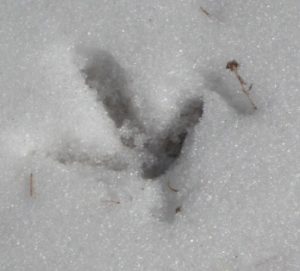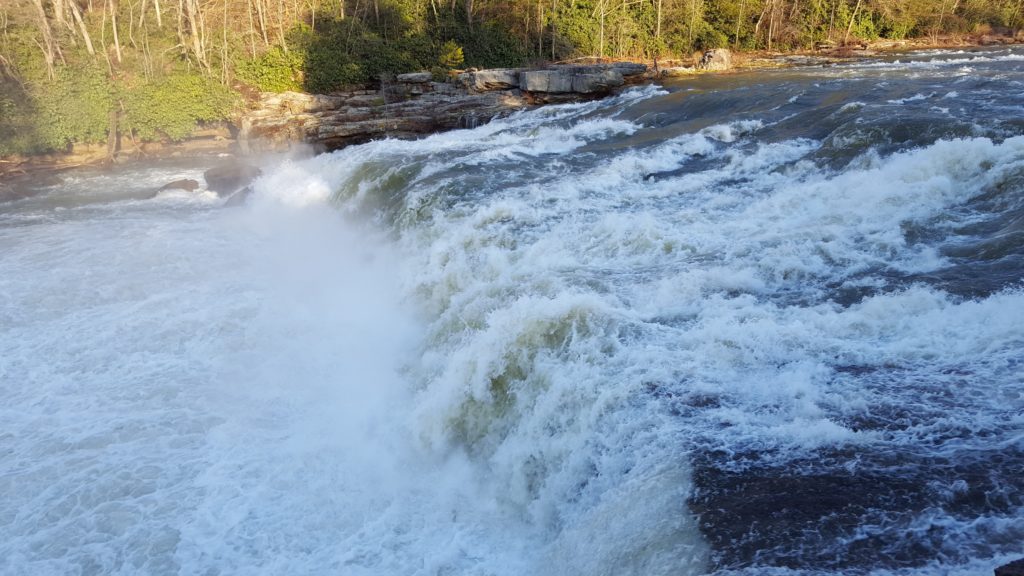When Angela and I stopped at a vista in Confluence, PA, we learned George Washington had camped here in May of 1754. In Washington’s diary, he wrote: “We gained Turkey-foot, by the Beginning of the Night.” The area was then called Turkey-foot because it’s where three rivers meet: Casselman River, Laurel Hill Creek, and the Youghiogheny (pronounced yock-a-ganey). All joining together into one, like the turkey foot above.
Water sports are big here. River rafting, kayaking. But they’re not happening now. April is pre-season, when those businesses are all shuttered. And for good reason. The roar of the snowmelt river is mighty indeed.
Black walnuts
 The black walnut trees we’ve seen have been sturdy and prolific. European walnut trees did not thrive here, but the endemic Black Walnut does fine. Native Americans harvested black walnuts, and also used the trees’ sap in their cooking. A comprehensive history of the walnut tree is found here.
The black walnut trees we’ve seen have been sturdy and prolific. European walnut trees did not thrive here, but the endemic Black Walnut does fine. Native Americans harvested black walnuts, and also used the trees’ sap in their cooking. A comprehensive history of the walnut tree is found here.
It is said early German immigrant settlers looked for land with stands of black walnut trees, since their presence indicated good soil with plenty of lime.
You might enjoy reading about black walnut tree lore handed down by the Goschenschoppen Pennsylvania community here, from which I lifted the following excerpt:
An old almanac in the Goschenhoppen Folklife Library contains a woodcut showing a farm boy with a baseball-bat size club whacking away at a walnut tree. The late Thomas R. Brendle records the practice of waking-up young fruit and nut trees that are reluctant to start bearing by beating them with a club. The folk practice dictates that the trees were to be beaten on New Year’s Day in the morning without speaking. A current arborist writes that this is not complete nonsense. Apparently if a young apple tree, for example, has reached the age when it should start to bear and it just doesn’t flower, during the winter when it is dormant a beating with a padded club and a vigorous twisting of the limbs traumatizes and shocks the tree into its normal cycle.



